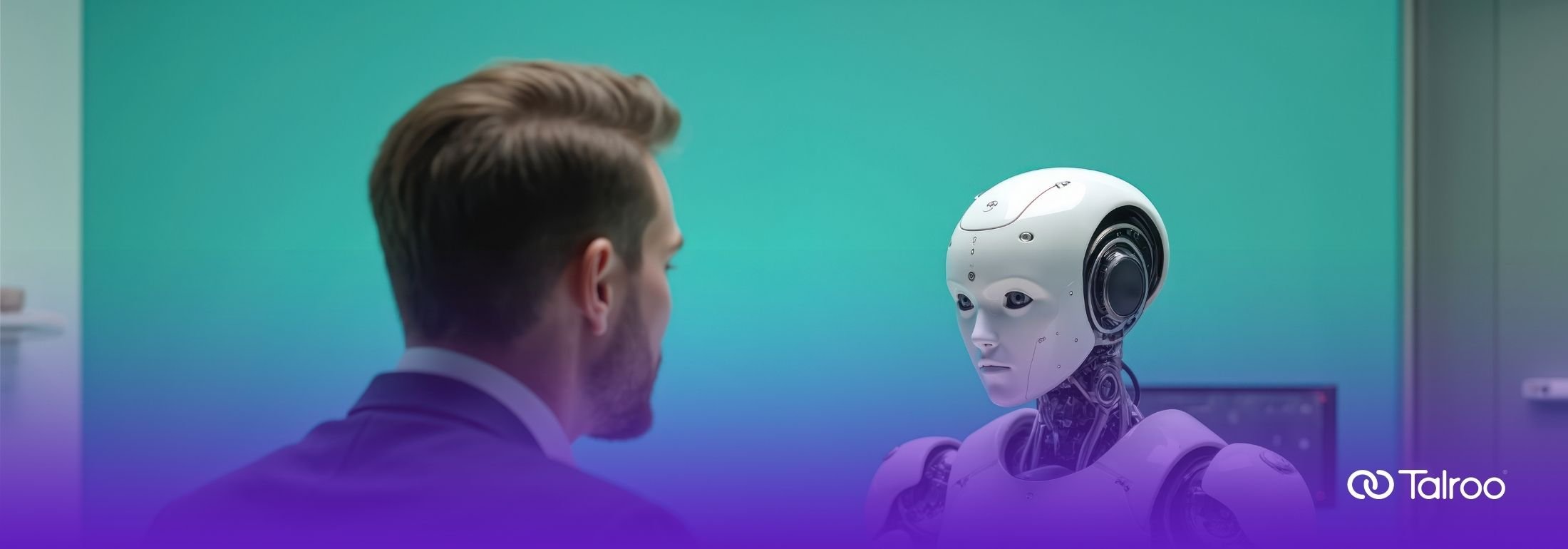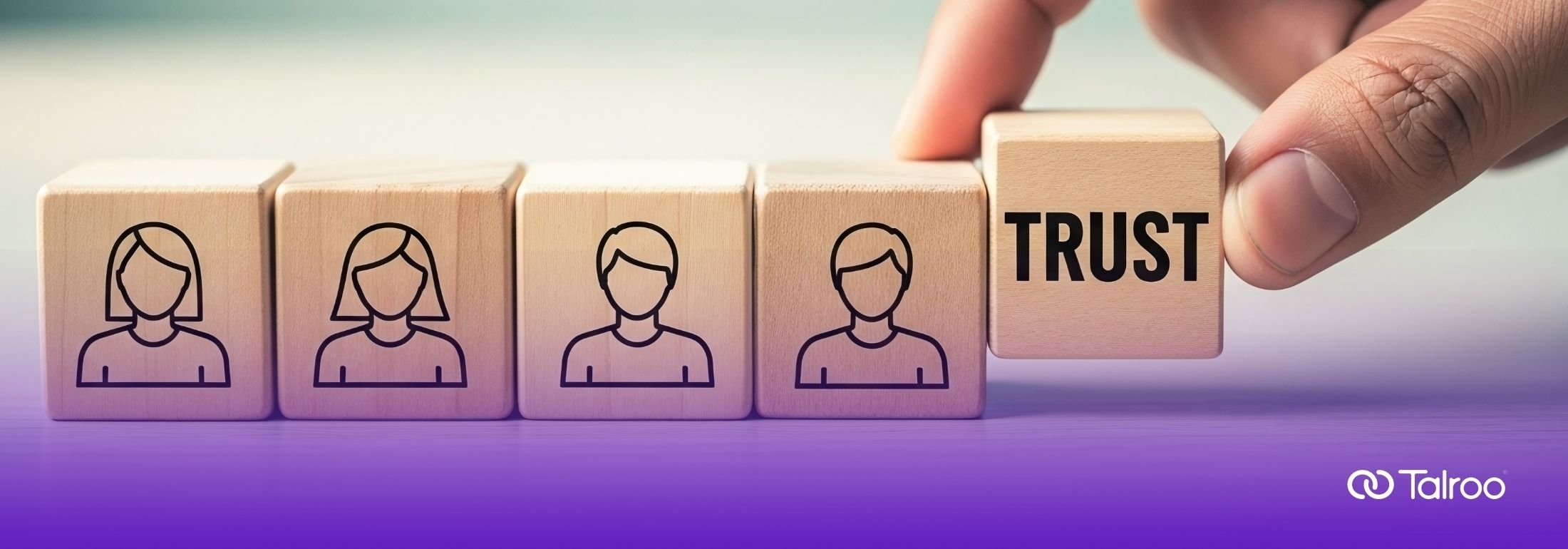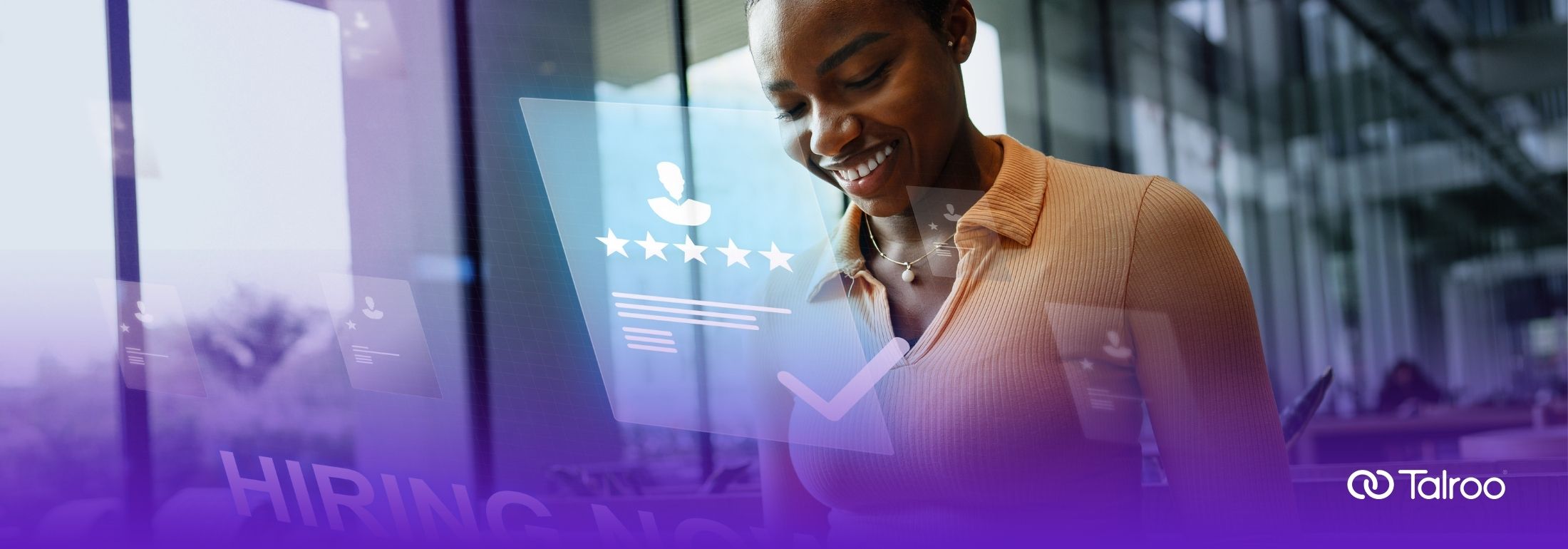
Why Candidates Deserve More Than a Chatbot | Talroo
In a world where AI tools are reshaping the hiring process faster than you can say “chatbot,” it’s tempting to go all in on automation. Chatbots screen applications, schedule interviews, and even answer candidate questions around the clock. And for good reason – they help companies move quickly and reduce workload. But here’s the problem: not every candidate wants to talk to a robot, especially your top ones.
High-intent job seekers, those rare gems who show genuine interest, bring strong qualifications, and actively engage with your brand, deserve more than just a transactional experience. They want to feel seen, respected, and valued. And that takes more than a chatbot script.
Let’s talk about how a human-first approach, powered by smart automation, can help you strike the right balance and hire better people, faster.
The Automation Temptation: What It Gets Right
First, let’s give automation its due credit. Automating early-stage tasks like resume screening, initial outreach, and scheduling interviews can save recruiters countless hours. It’s especially helpful in high-volume environments like retail, hospitality, or healthcare, where hundreds of applicants may apply for the same role.
Chatbots and AI screening tools can:
- Provide 24/7 responses to candidate inquiries
- Instantly filter applicants based on basic qualifications
- Automate next steps in the process like assessments or scheduling
- Keep candidates warm with consistent follow-up
That’s valuable. In fact, automation is essential for managing candidate pipelines at scale. But it’s not the whole solution, especially if you want to attract and retain top-tier talent.
Related: AI-Powered Personalization: Revolutionizing Employee Engagement in Retail
The Risk of Over-Automation: Losing the Human Touch
While automation offers efficiency, over-reliance on it creates risk. When the hiring experience becomes too robotic, it can alienate candidates, especially the ones you most want to impress.
Imagine being a highly qualified candidate who tailored their resume and cover letter, only to receive a canned chatbot reply or get ghosted after a screening quiz. That’s not just a missed opportunity. It’s a hit to your employer brand.
In a 2025 CareerPlug report, over 60% of candidates said personalized communication significantly influenced their perception of an employer. In other words: top candidates don’t just want a job. They want a relationship. And relationships require humans.
The Case for Prioritizing High-Intent Candidates
Not every applicant is equally engaged. Some click “apply” on dozens of jobs in a day, often without reading the description. Others research your company, follow your employer brand on social media, and submit thoughtful applications.
These are your high-intent candidates, or the ones more likely to convert, stay longer, and contribute meaningfully. But you can’t build trust with them through automation alone.
By identifying and prioritizing these candidates early in the process, you can:
- Accelerate time-to-hire for top talent
- Reduce drop-off from qualified applicants
- Enhance the candidate experience and employer reputation
- Create a more equitable and respectful hiring journey
The key is knowing when to automate and when to reach out directly.
Balancing Tech and Touch: A Smarter Hiring Framework
According to a 2025 HireVue report, candidates welcome the use of AI in their job search and interview preparation, but 66% are opposed to AI making the final hiring decisions. So how do you create a hiring process that uses automation without losing humanity? Here’s a framework that blends both:
1. Use AI to Handle Volume, Not Value
For high-volume roles or early-stage filters, AI and chatbots can handle first-line communication and pre-screening. Let automation answer FAQs, confirm application submissions, and filter out unqualified applicants quickly.
But once a candidate hits your “high-intent” criteria (based on experience, engagement, or source of application), hand off the interaction to a real person.
2. Define What High-Intent Looks Like
Set clear signals that define high-intent candidates. These may include:
- Applying directly from your careers page or talent community
- Engaging with your employer brand content
- Referral from a current employee
- Submitting a tailored resume or cover letter
- Completing optional assessments or applications
Candidates who demonstrate these behaviors should get fast, human-centered follow-up.
3. Prioritize Personal Outreach
When a high-intent candidate applies, that’s your moment to impress. Whether it’s a quick personalized email, a LinkedIn message, or a 5-minute phone screen, human contact goes a long way. It signals that you value their time and effort and that your company cares about people, not just productivity.
4. Leverage Candidate Insights for Follow-Up
Use data from your AI tools to inform your personal outreach. For example, if a chatbot logs that a candidate asked specific questions about company culture or advancement opportunities, a recruiter can follow up with tailored info. That’s a meaningful connection your competitors probably aren’t making.
5. Train Recruiters to Deliver Human-First Experiences
Technology won’t replace recruiters, but it will elevate the ones who know how to combine tech with empathy. Train your team to step in at the right moments, build rapport quickly, and champion candidate experience from start to finish.
Related: Decoding AI: The Recruiter’s Glossary to Artificial Intelligence in Hiring
Human-First Doesn’t Mean Human-Only
Being “human-first” doesn’t mean rejecting AI or slowing down your process. It means using automation strategically to enhance your human interactions, not replace them.
Here’s what it looks like in action:
| Stage | Automation | Human Touch |
| Application | Chatbot confirms receipt, answers FAQs | N/A |
| Pre-Screen | AI filters by basic criteria | Recruiter reviews top matches manually |
| High-Intent Flagged | N/A | Recruiter sends personalized outreach |
| Interview Scheduling | Automated scheduling tools | Option for human follow-up if needed |
| Post-Interview | Automated status update | Recruiter provides feedback personally |
This kind of hybrid approach ensures efficiency at scale, while still making your top candidates feel like more than just a number.
Related: Using AI to Analyze Recruiting Data and Metrics | Talroo
Final Thoughts: Rethinking the Role of Recruiters
As hiring technology evolves, the role of recruiters is shifting from gatekeepers to relationship-builders. The most effective recruiters will be those who know when to lean on tech and when to show up as humans.
Because the truth is, great candidates have options. And the way you treat them during the hiring process says a lot about how they’ll be treated as employees. Want to attract the best talent? Start with respect. Start with empathy. Start with a little less chatbot and a lot more conversation.
Ready to find high-intent candidates faster without sacrificing the human touch? Talroo’s intelligent recruitment platform helps you connect with the right job seekers at the right time, and gives you the tools to prioritize outreach where it counts most.
Learn more about how Talroo can support a human-first hiring strategy.




